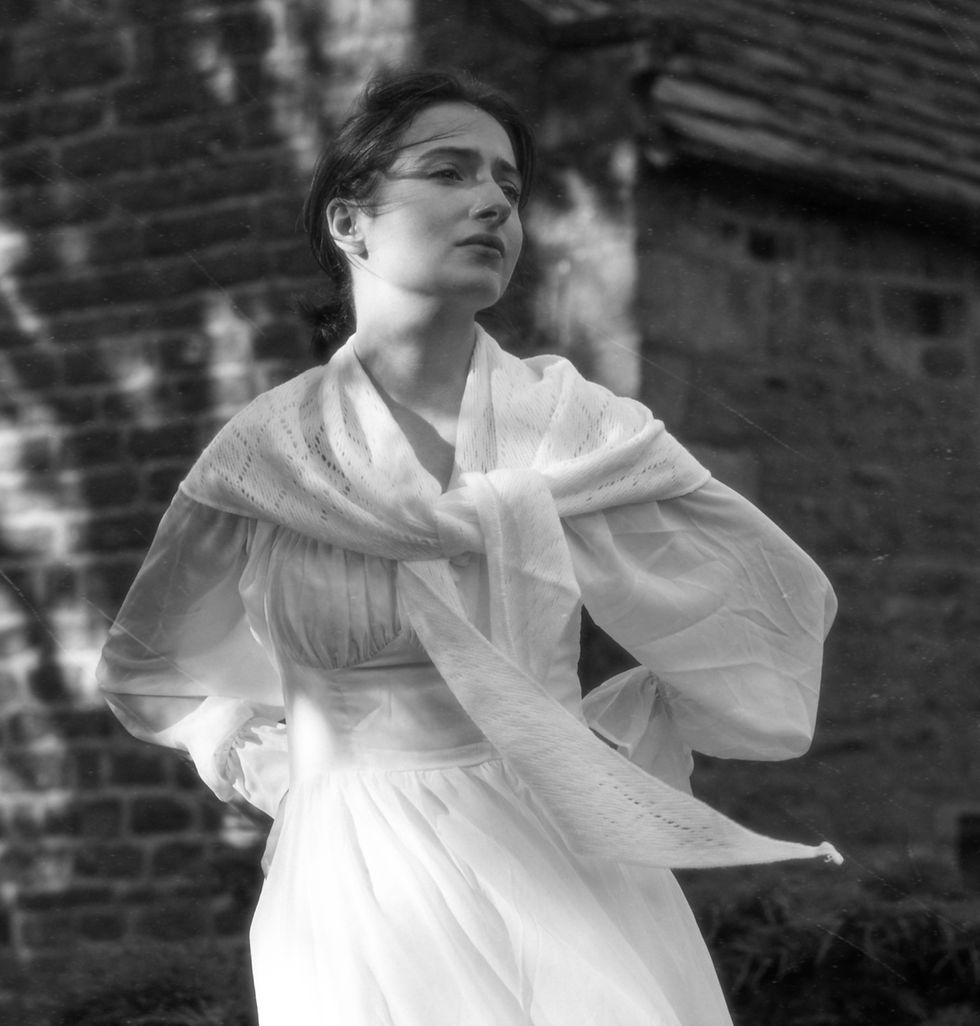Sweetheart Evolves.
- Mark Anthony

- Sep 6
- 3 min read
Updated: Sep 11
Every film changes as it grows. Sweetheart: Angel of the Moor began as history on a page —court records, news reports, dates, names. But as I’ve lived with it, the story has shifted. It has gathered shadows, echoes, fragments of folklore. What was once a straightforward period drama has become something else: haunted, atmospheric, a ghost story carved into the Yorkshire landscape.
Rather than write an essay about the process, I thought it would be more natural to share these reflections in a Q&A format, as if someone sat me down and asked about the film. It’s not polished, but then neither is the story.

Q: Mark, for those who don’t know, what is Sweetheart: Angel of the Moor about?
It’s based on a true crime story set in 1858, Nidderdale. Mary-Jane Skaife was 21, with her whole life ahead of her, when she was murdered by her lover, James Atkinson. He was found not guilty of murder; instead, the court declared him insane under the M'Naghten Rules — a law introduced in 1843 that, unbelievably, is still in use today. What struck me was how quickly the system excused him, while Mary-Jane’s story, her voice, was simply erased, an injustice that still echoes in the way women are treated by the courts today.
Q: You’ve said the film has shifted in style as it developed. How so?
At first I thought of it as a straight period drama, bonnets, chapels, courtroom, a Ralph Vaughan Williams view of rural English life. But the deeper I went, the more I realised it’s not just history. It’s atmosphere, folklore, silence. It’s… haunted, really. Not about re-enacting the past exactly, but about how it might have felt. A place where superstition lived alongside faith. Where justice was uncertain. Where women could be erased.
Q: What kind of imagery and motifs run through the film?
Motifs, yes. The wind comes and goes, carrying voices. Children reciting Rossetti’s “Who has seen the wind?” - heard like a whisper, a voice inside your head. Sprigs of white heather, rare and fragile, drift through the frame. In folklore they bring luck, but here they carry an otherworldly charge, as if touched by something beyond. The Barghest - Yorkshire’s black dog, an omen - is more sensed than seen. It haunts James, shaped in shadow and sound, a presence that presses on him as the story darkens.

Q: And visually? What will it look like?
Black-and-white. Very stark. I’ve been thinking about Hitchcock, Psycho in particular, and film noir. Light and shadow working like characters in their own right. Silence stretched thin. Suspense built from suggestion, from what you don’t see. But this isn’t some anonymous setting, it’s still Yorkshire. Period costume, dialect, locations. And Nidderdale isn’t Brontë bleak. It’s a valley with an inherited elegance, long described as pretty, shaped by the legacy of John of Gaunt’s castle and the old Knaresborough Forest. I want to capture that, Yorkshire in its “Sunday best.” Which makes the violence at the heart of the story feel sharper, more shocking.
Q: So is it a period drama, a gothic horror, or a ghost story?
It’s all three. Period drama, yes, because it’s drawn from real records. Gothic horror, in the atmosphere, in the folklore, in the violence that hangs over it. And a ghost story, because Mary-Jane’s presence is always there. She was silenced in life. On screen, she endures.

Q: This feels very personal. Do you feel a family connection to it?
Yes. My family are deeply rooted in this place, Skaife and Atkinson run through the lines. I’ve traced links back to Mary-Jane, and to James Atkinson too. So there’s this closeness that feels both comfortable and uncomfortable. Telling her story is about reclaiming it, really. Giving her back a voice. My father was born in Darley, my mother in Knaresborough, and I grew up in Harrogate, on the edge of Nidderdale. These landscapes, these chapels, they’re in my heart. It isn’t abstract to me. It’s home. And perhaps that’s why Mary-Jane’s story doesn’t feel distant history, but something that lingers, almost echoing through my own.

In the end, Sweetheart: Angel of the Moor is not only about a crime in 1858. It is about justice denied, and the silence that followed, a silence that still seems to drift on the wind across Nidderdale. For me, it’s about Mary-Jane herself: giving her back the space, the voice, the presence she was denied. She belongs to the valley and the moor, yes, but now also to the screen, not as a victim erased, but as a spirit that endures.





Comments